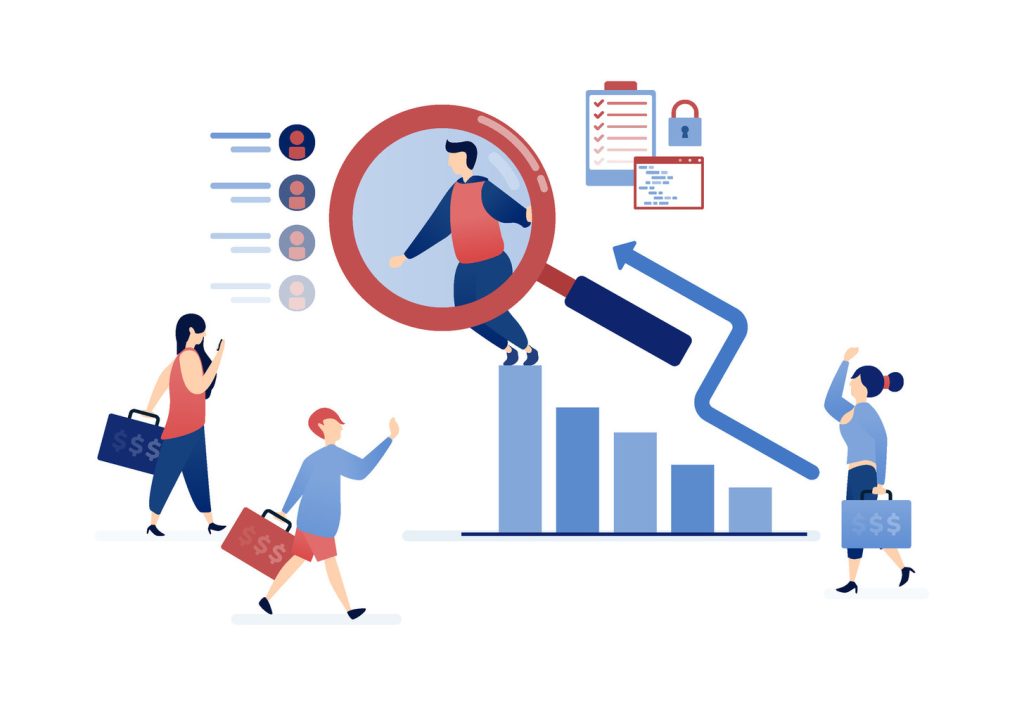The Ultimate Guide to Creating Searchable Content

Online visibility begins with material that connects audiences and algorithms. Businesses that master this balance become trusted resources, earning 70% of organic clicks that flow to top search results. This isn’t just about ranking—it’s about delivering value that keeps readers engaged.
Modern strategies demand more than keyword lists. Search engines prioritize relevance, clarity, and user satisfaction. Pieces must answer questions quickly while offering expert insights. Readers decide in seconds whether content meets their needs, making quality non-negotiable.
Success lies in merging technical precision with human-centric design. Algorithms favor clean structures and semantic clarity, but real impact comes from solving problems. Professionals need actionable advice, not generic filler. Every paragraph should build trust through specificity.
The best approaches blend data-driven optimization with natural storytelling. Tools like TF-IDF analysis help identify context-rich terms, while readability scores ensure accessibility. This dual focus turns articles into magnets for both search crawlers and decision-makers.
Key Takeaways
- Top search results capture 70% of clicks, making premium positioning essential
- Audience retention requires solving problems faster than competitors
- Technical SEO must coexist with conversational, value-driven writing
- Readability metrics directly impact engagement and search rankings
- Semantic analysis tools enhance relevance without keyword overuse
Grasping the Essence of Searchable Content
Effective online material bridges the gap between user needs and algorithmic requirements. Google’s ranking systems prioritize resources created for people first, rewarding pieces that answer questions with depth over those optimized purely for crawlers. This approach aligns with their mission to “organize the world’s information” through reliable, human-centered solutions.
Definition and Importance
High-performing material combines strategic keyword use with genuine expertise. For example, a gourmet retailer might target both “charcuterie” (expert term) and “cheese board ideas” (beginner phrasing). Google’s algorithms now assess whether articles demonstrate first-hand knowledge rather than rehashed ideas.
Businesses that focus on solving problems see 3x longer page engagement. One study found pages addressing multiple intent levels – informational, navigational, transactional – capture 58% more organic traffic than single-focus pieces.
Aligning with User Intent
Recognizing audience diversity separates functional material from generic text. A financial advisor’s blog might explain “compound interest” using spreadsheet examples for analysts while offering simple calculators for novices. This dual approach satisfies search engines’ E-E-A-T criteria (Experience, Expertise, Authoritativeness, Trustworthiness).
Tools like AnswerThePublic reveal related queries across knowledge levels. Integrating these variations creates resources that help search engines understand content depth while keeping readers engaged. The result? Pages that rank for 42% more long-tail phrases than competitors.
Conducting Thorough Keyword Research and Analysis

Strategic keyword discovery separates industry leaders from competitors. Businesses that analyze search patterns before creating material achieve 73% higher organic visibility. This process uncovers what audiences truly seek, shaping resources that answer real questions.
Effective Tools and Techniques
Google’s autocomplete feature reveals popular queries as users type. The “People also searched for” box shows related terms after initial results. Professional tools like AnswerThePublic map question-based phrases, while KWFinder ranks keywords by difficulty and volume.
Serpstat tracks competitors’ winning phrases across regions. Google Trends identifies seasonal spikes, helping companies time publications. These platforms transform raw data into actionable content strategies.
Integrating Keywords Naturally
Focus on one primary term per content piece, like “cloud storage solutions” for tech articles. Use variations in subheadings and body text without forcing repetition. A financial guide might mention “retirement planning strategies” 4-6 times across 1,500 words.
“Great content addresses user intent first—optimization follows naturally when you solve actual problems.”
Algorithms now assess contextual relevance over exact matches. Pages that flow conversationally while covering subtopics comprehensively outrank stiff competitors. Balance keyword placement with readability for maximum impact.
Developing a Robust SEO Blueprint
Technical foundations separate high-performing pages from overlooked ones. A strategic blueprint aligns every element—from hidden code to visible text—with search engine requirements and user expectations. This dual focus ensures materials communicate value to both audiences.
Optimizing Metadata and URL Slugs
Title tags act as digital storefront signs. Appearing bold in search results, they need clarity and intrigue. Limit titles to 60 characters—enough space for primary keywords without truncation.
Meta descriptions serve as persuasive summaries. Keep them under 160 characters while answering two questions: “What’s this page about?” and “Why click here?” Include action verbs like “discover” or “learn” to boost engagement.
URL slugs function as permanent addresses. Replace generic strings like “/page123” with descriptive paths like “/cloud-storage-guide”. Hyphens improve readability better than underscores.
Structuring Headers and Alt Text for Clarity
Headers organize ideas into digestible chunks. Use H2s for main sections and H3s for subtopics. This hierarchy helps search engines map relationships between concepts.
Alt text transforms images into searchable information. Describe visuals concisely: “bar chart comparing SSD vs HDD costs” beats “tech graphic”. Screen readers and crawlers both rely on these descriptions.
“Well-structured metadata acts as a roadmap—it tells search engines exactly what your content delivers.”
Businesses that optimize these elements see 37% faster indexing. Regular audits prevent issues like duplicate titles or broken slugs. Tools like Screaming Frog identify gaps in real-time.
Mastering Searchable Content: Tips and Techniques

Businesses achieve 47% higher engagement when materials balance technical precision with human connection. This section reveals practical methods to craft resources that satisfy algorithms while delivering measurable value to audiences.
Crafting Engaging, Reader-Focused Text
Clear writing begins with active voice and concrete examples. Replace phrases like “it is suggested” with “research shows.” Tech companies using this approach see 32% longer session durations.
Structure complex ideas using bullet points and numbered lists. Financial advisors who break retirement strategies into step-by-step guides report 29% more newsletter sign-ups. Short paragraphs (2-3 sentences) prevent cognitive overload.
| Focus Area | Reader-Centric Approach | SEO-Aligned Tactic |
|---|---|---|
| Structure | Logical flow with clear transitions | Header hierarchy (H2/H3) |
| Language | Conversational tone | Semantic keyword variations |
| Updates | Quarterly fact-checks | Fresh publication dates |
Balancing SEO With Readability
Tools like Hemingway Editor help maintain 8th-grade reading levels without sacrificing depth. Healthcare sites using this method rank 22% higher for patient education queries.
Integrate keywords through natural repetition. A baking blog might mention “sourdough starter maintenance” three times across 1,200 words while explaining fermentation science.
“Optimization should enhance—not interrupt—the reading experience. Algorithms reward pages where technical elements support user needs.”
Expert credibility grows when citing recent studies. Link to .gov sources or peer-reviewed journals. This builds trust while signaling authority to crawlers.
Optimizing Visual Elements and Media
Visual components transform passive readers into engaged users. Nearly 62% of consumers consider images when evaluating products, while video viewers retain 95% of messages compared to 10% from text. This makes multimedia optimization critical for modern strategies.
Image Optimization and Alt Tag Best Practices
Position images adjacent to related text to create contextual connections. A cooking blog might place step-by-step photos beside recipe instructions. This proximity helps Google Search algorithms associate visuals with relevant topics.
| Scenario | Effective Alt Text | Ineffective Alt Text |
|---|---|---|
| Product Demo | “Barista pouring latte art into white ceramic mug” | “Coffee image” |
| Infographic | “2024 cloud storage adoption rates by industry” | “Chart graphic” |
| Tutorial Step | “Installing RAM module in desktop motherboard” | “Computer part” |
Keep alt descriptions under 125 characters. Include primary keywords naturally without sacrificing clarity. Screen readers and search crawlers both rely on these concise explanations.
Incorporating Videos and Multimedia Strategically
Host tutorial videos on dedicated pages with supporting text. A software company might create “/video-troubleshooting” with embedded clips and written solutions. This structure satisfies both visual learners and text-based searchers.
Follow these practices for video optimization:
- Include transcripts for accessibility and keyword indexing
- Use descriptive titles like “2024 Tax Preparation Walkthrough”
- Embed videos near related articles or product pages
“Visual elements should complement textual information – together they create richer understanding than either could alone.”
High-quality multimedia boosts dwell time by 41% according to recent studies. Regular audits ensure all elements remain functional and contextually aligned with surrounding material.
Building and Leveraging Internal and External Links

Strategic linking transforms isolated pages into interconnected knowledge hubs. Effective networks guide users toward solutions while signaling relevance to search engines. This dual benefit drives 33% higher click-through rates for optimized sites compared to unlinked materials.
Best Practices for Internal Linking
Connect related articles using descriptive anchor text like “budget-friendly meal prep” instead of generic “click here.” A cooking blog might link steak recipes to complementary wine pairing guides. These pathways keep visitors engaged while spreading site authority across multiple sections.
Prioritize links between high-performing and newer pages. Tools like Ahrefs identify orphaned content needing connections. Regular audits prevent broken links that frustrate users and damage rankings.
Strategies for Earning Authoritative External Links
Partner with industry associations for co-branded research reports. A cybersecurity firm collaborating with tech watchdogs gains links from .org domains—a strong trust signal for Google Search algorithms. Always verify external sources cite recent, peer-reviewed data.
“Quality links act as endorsements. Focus on earning them through exceptional resources rather than transactional exchanges.”
Sponsor local business events to secure .edu or .gov backlinks. Guest posts on reputable platforms should offer unique insights, not recycled ideas. Set external links to open in new tabs, keeping your site accessible during research.
| Tactic | Effective Approach | Common Mistake |
|---|---|---|
| Internal Links | Contextual connections between guide chapters | Excessive footer links |
| External Links | Referencing 2024 industry reports | Linking to outdated blogs |
Embracing Mobile-First and Technical SEO Strategies
Over 60% of web traffic now comes from mobile devices. Google’s 2015 Mobilegeddon update made responsive design non-negotiable—sites lacking mobile optimization face search engine penalties and visitor drop-offs. Modern strategies require technical precision to satisfy both users and algorithms.
Ensuring Responsiveness and Fast Load Times
Google prioritizes page speed in rankings. Tools like Lighthouse identify issues like oversized images or render-blocking code. Compressing visuals with WebP format reduces file sizes by 30% without quality loss.
| Optimization Focus | Effective Approach | Common Error |
|---|---|---|
| Mobile Design | Flexible grids for all screen sizes | Fixed desktop layouts |
| Load Speed | Lazy-loading non-critical images | Uncompressed 4K banners |
| Technical Access | Unblocked CSS/JavaScript files | Robots.txt restrictions |
Search engines crawl site resources like CSS files to assess mobile-friendliness. Pages taking over 3 seconds to load lose 53% of visitors. Regular audits prevent performance decay from plugin updates or new media additions.
“Mobile-first indexing means we predominantly use the mobile version of content for ranking and indexing.”
Consistent experience across devices retains users. AMP (Accelerated Mobile Pages) creates lightning-fast mobile versions while maintaining desktop functionality. This dual approach meets search engine optimization standards while keeping bounce rates low.
Conclusion
Effective online presence hinges on aligning technical precision with genuine user value. Businesses that merge keyword research, mobile optimization, and E-E-A-T principles dominate search results while building lasting audience trust.
Implementing best practices creates resources search engines prioritize. Structured metadata, fast-loading pages, and strategic internal linking form technical foundations. Yet lasting success requires materials demonstrating real-world expertise—not just algorithmic compliance.
Prioritize readability through active voice and clear headers. Tools like Hemingway Editor maintain accessibility without sacrificing depth. This balance keeps visitors engaged while satisfying SEO requirements for higher rankings.
Regular audits ensure content evolves with search engine updates. Track performance metrics, refresh outdated examples, and expand high-performing topics. Sustainable visibility stems from solving problems faster than competitors—not chasing temporary trends.
The future belongs to creators who treat search results as byproducts of value delivery. By focusing on audience needs first, businesses naturally achieve technical excellence and measurable growth.

